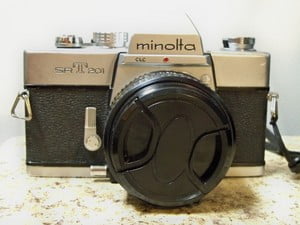Keeping children active during the long winter months is important to their health, but it’s especially critical to the healthy development of special needs children, particularly those with brain injuries. Our son, Evan, now 16 months old, suffered a stroke in utero, resulting in right side hemiparesis and cerebral palsy. Regular activity, both physical and mental, is essential to his growth. With the help of his doctors and therapists, we have identified fun activities to aid Evan in rebuilding some of the motor and cognitive functions he lost because of his injury. Here are ten of our favorite winter activities for keeping special needs toddlers active.
Use music to engage your child’s whole brain. One of our favorite tunes for accomplishing this is “Head, Shoulders, Knees and Toes.” As a family, gather in a circle, play the music, and point to your body parts as you sing.
Foster motor and language development by verbalizing and mimicking movements in a mirror. With your child seated in front of you before a mirror, point to body parts, such as your nose, chin and knee, and insist your toddler do the same.
Encourage your toddler to mimic sounds. Start by creating physical sounds with your hands, such as tapping on a table or drum, urging your child to follow suit. Move on to vocal sounds that require your child to use mouth muscles, such as “ba” and “da,” graduating to more difficult sounds as you progress.
Create an activity requiring your child to use his thumb and forefinger to pick up and move objects , such as grasping Cheerios out of a bowl and guiding them to his mouth. To aid in language development, count the items as he takes them out.
Set up a space where your toddler can draw or paint. Make it fun by hanging the creations on the refrigerator, encouraging both the use of motor skills and creative discovery in the process.
Fashion an indoor obstacle course to assist toddlers with walking. You can use chairs, couch pillows, blankets and stools positioned throughout the family room or kitchen. This will give your toddler much-needed practice navigating different terrain.
Promote the use of both sides of the brain with toys that require two hands, such as LEGOs or building blocks. Teaching your child to hold a block in one hand while attaching a second block with the other hand provides this kind of brain engagement.
Develop sensory skills through touch activities. Place items of varying textures, such as sandpaper and feathers, in different bowls. Practice touching these items with your child, reinforcing the texture of each with key words, like “bumpy” and “soft.”
Design an indoor sand box to help refine motor function. You can place rice or beans in a large mixing bowl, and allow your child to scoop and dump using a shovel and pail.
Improve weight-bearing by creating a tunnel for crawling. By using a pre-made tunnel or creating one with chairs and blankets, you can make crawling back and forth — a great weight-bearing activity — fun.
Winter may hold you indoors, but with these ten activities, you can keep your special needs toddler active and engaged.
Related articles by Laura Sauer:
5 Ways Parents Can Help Students Achieve Success
5 Things Never to Say to a Special Needs Parent
Pediatric Stroke May Talk a Good Game, but It’s Got Nothing on My Son




